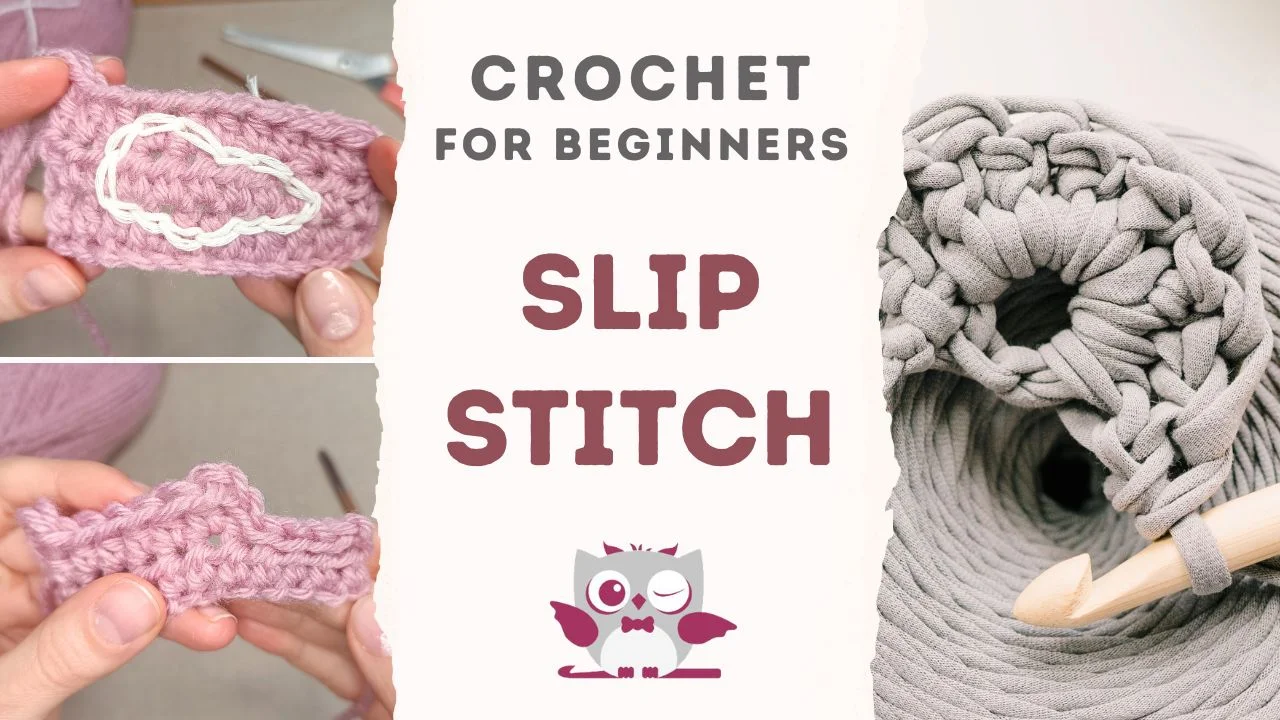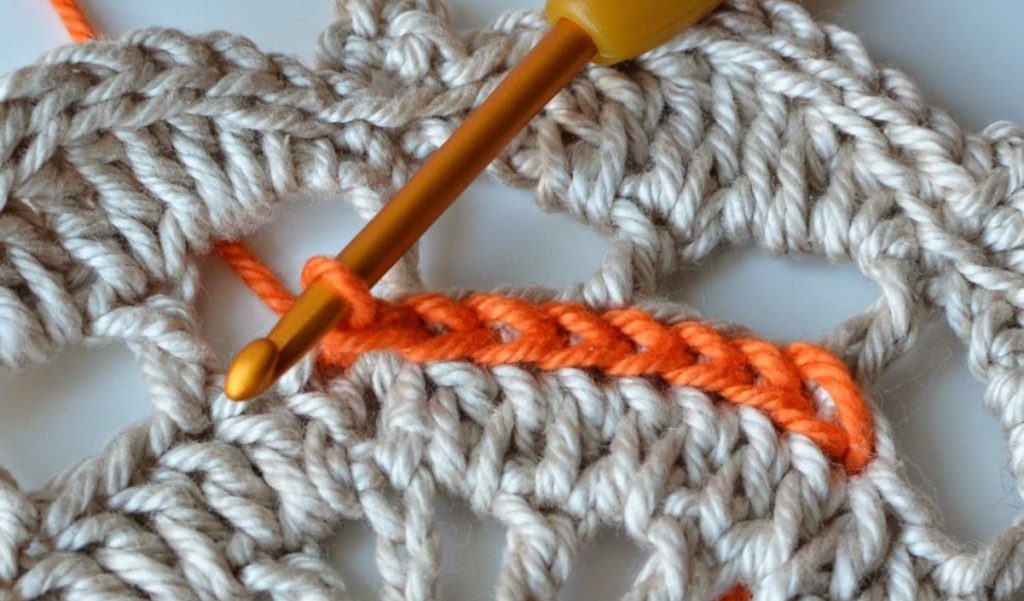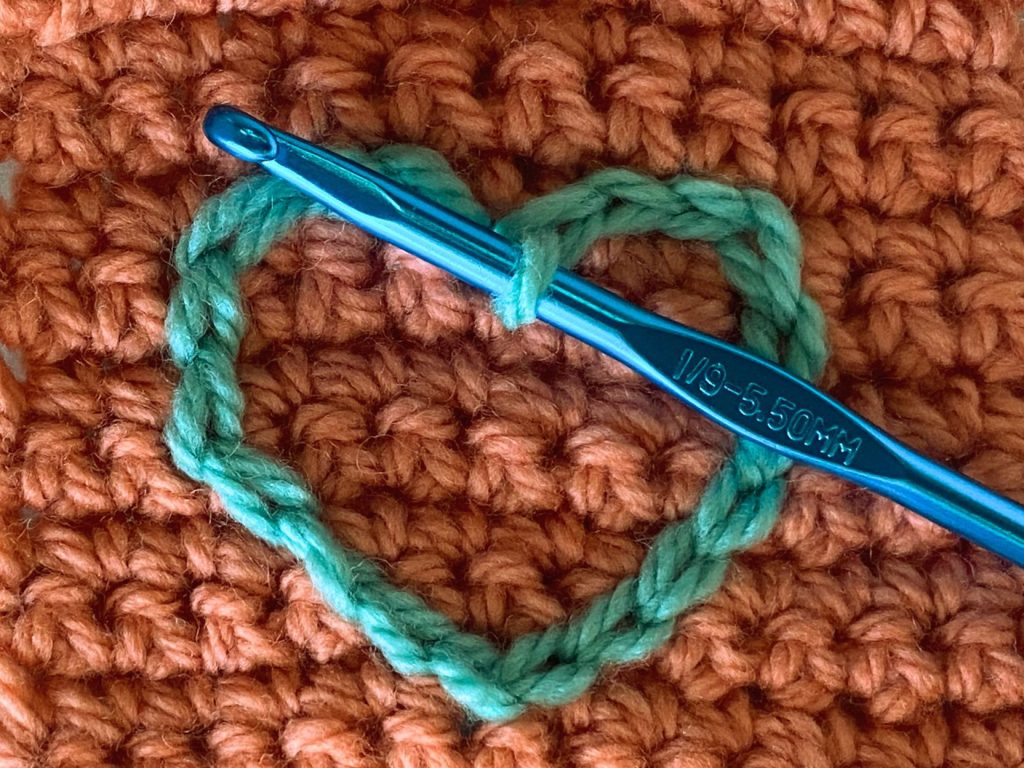In this article:
There aren’t many stitches as versatile as a crochet slip stitch. It’s so small it feels insignificant, but in fact comes in handy quite a lot. Learn how to crochet this stitch and how to use it in your projects.
What is a slip stitch in crochet?
A slip stitch (sl st) in crochet is one of the basic crochet stitches. We often use it to join rounds, create seamless edges, or move the yarn from one point to another. It’s versatile because it doesn’t add height to the fabric.
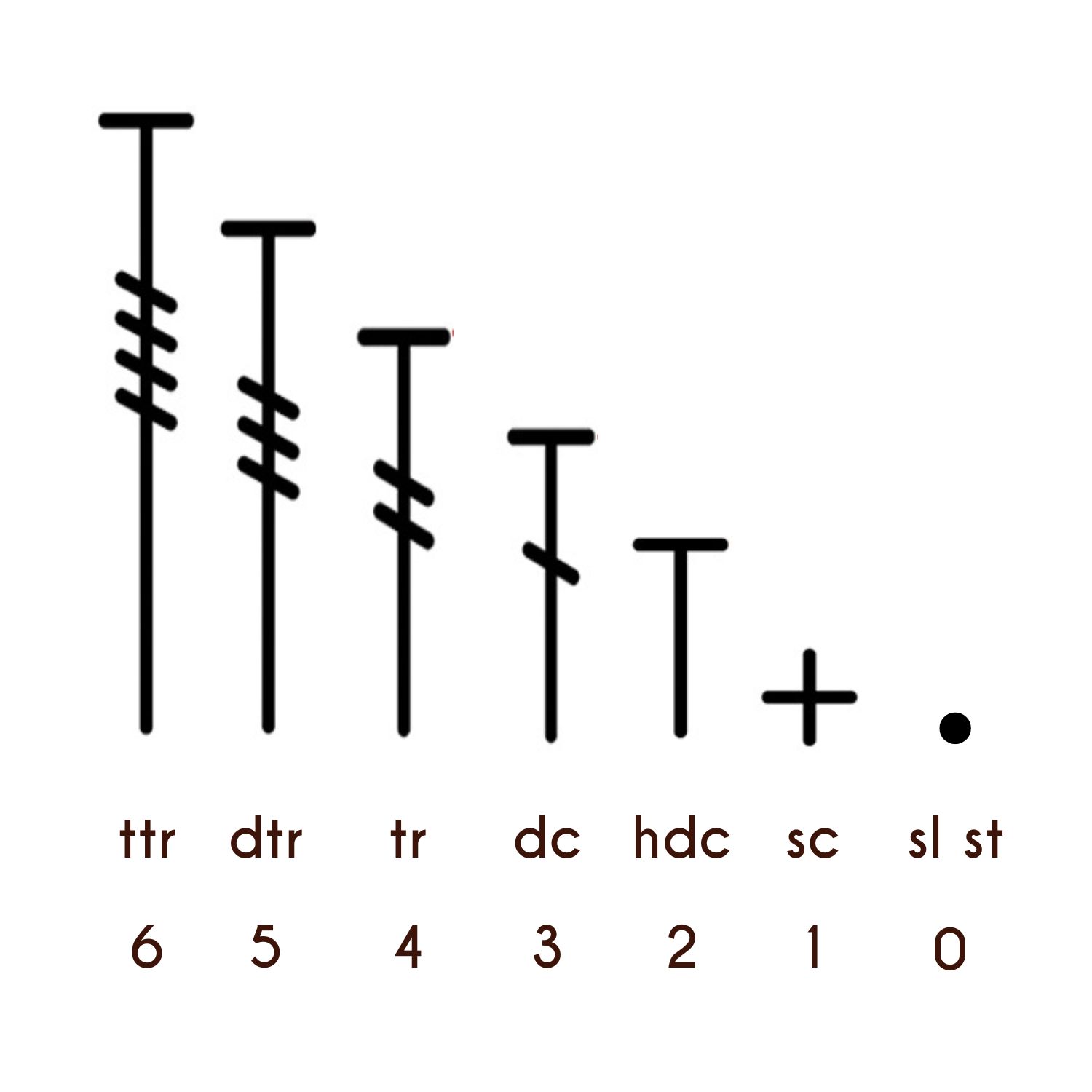
Benefits of using a crochet slip stitch
While other crochet stitches usually build height, the slip stitch creates a nearly invisible stitch. We use it for specific purposes, such as joining rounds, moving from one point to another, or decorating. Its characteristic qualities make it an important element of simple and complex crochet designs.
Crochet Slip Stitch Technique
In this video tutorial, you will see three ways of using this stitch in crochet. You can read more about them later in the article.
Video tutorial
Step-by-step instructions
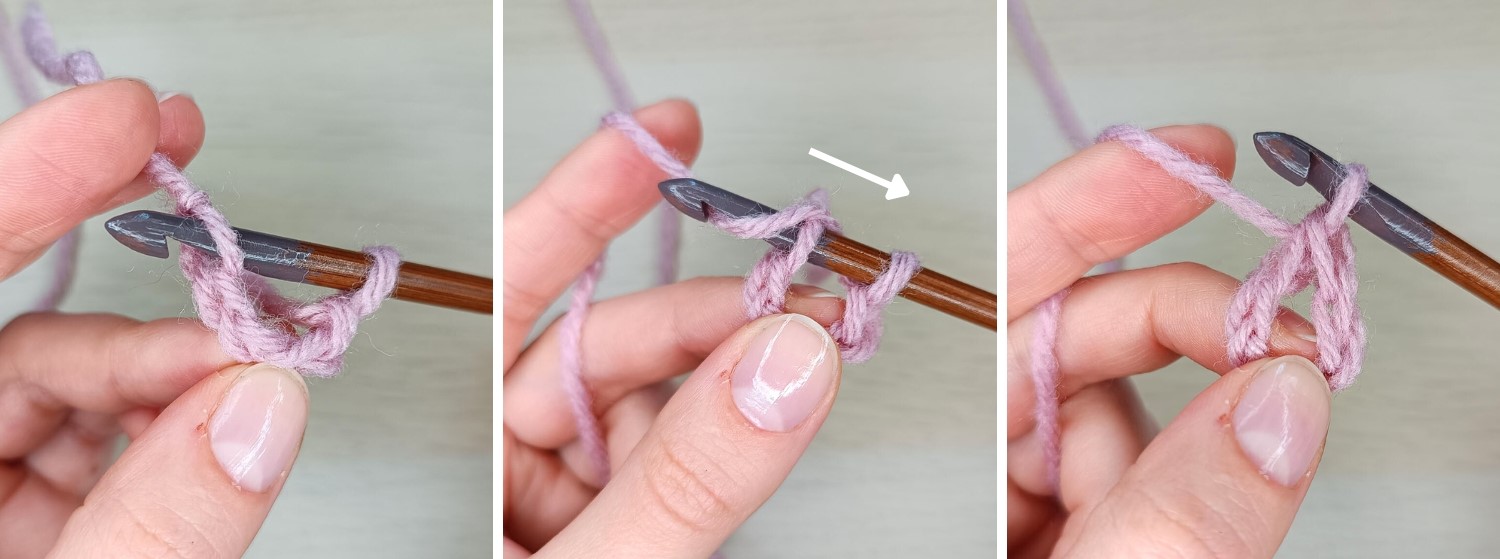
- Insert your hook into the stitch or space of your choice.
- Grab the yarn and pull through both the stitch or space and the loop on your crochet hook. You now have one loop left on your hook, and the stitch is complete.
Uses for Crochet Slip Stitch
Let’s further explore the uses of this versatile technique.
Working in the round
To start a circular project, you can go either for an adjustable magic ring or a chain loop. The latter requires using a slip stitch to form a ring.
If you are working in circles, you will most likely use one of two ways of finishing the round. One is to continue spirally – a technique specifically useful in amigurumi. The other one uses a slip stitch to join the first and the last stitch together.
Watch the video to see how to join rounds with this technique.
Moving to the right spot
The slip stitch doesn’t add any height to the row, so we can use it to move to the right spot. This technique comes in handy when you need to start another round farther along the row or want to shape it unusually.
Watch the video to see this technique in action.
Surface crochet
This is the most decorative way of using these stitches and gives you a lot of room for expression. Add texture to the surface by placing these stitches strategically in patterns or sequences.
Learn the basics of surface crochet by watching our video or reading these articles:
Joining Pieces
Slip stitches are often employed to create seamless joins when working in the round. This results in a smooth and almost invisible transition from one round to the next.
- Seaming: Slip stitches are often used to seam together crochet pieces, such as squares in a blanket or amigurumi parts. They create a neat and secure join.
- Invisible Seams: When used correctly, slip stitches can result in nearly invisible seams, making your finished project look seamless and professional.
Common mistakes and how to fix them
There are some common mistakes you can encounter, so let’s list them:
- Twisted chain loop – practice keeping chain stitches in check while creating a chain loop. For example, trace them with your fingers and untwist the stitches as you go.
- Uneven tension – you may find yourself pulling stitches a little bit too tight. It distorts the rest of the stitches, so practice loosening the grip and relaxing.
- Difficulty finding the right stitch – it’s hard to make a stitch if you don’t know where to insert the hook. Spend some time studying the anatomy of crochet, so you will always be able to find the right stitch.
Take your time, stay attentive to tension, and address any mistakes promptly for a polished finish.
Tips for Working with Slip Stitches
- Keep Tension Consistent: Maintain even tension when making slip stitches to create a uniform appearance in your work.
- Practice Joining Rounds: Practice creating seamless joins in the round using slip stitches. It may take a bit of practice to make the joins look smooth.
- Experiment with Surface Crochet: Try out surface crochet to add unique designs and embellishments to your projects. It’s a creative way to personalize your crochet items.
- Use Slip Stitches for Precision: When you need to be precise in your crochet work, the slip stitch is your friend. It allows you to make small adjustments without significantly altering the stitch height.
The slip stitch may be small, but its importance and versatility in crochet are undeniable. As you gain experience, you’ll find that mastering t
Advanced Techniques
This versatile stitch opens up a world of creative possibilities in crochet. See how you can use it in garments, accessories, or decorations.
Working slip stitches in different directions
We mentioned surface crochet before, as it’s one of the most beautiful and easy decorating techniques. You can easily create lines of slip stitches by piercing the fabric with your hook. The best thing is, that you can work them in various directions – horizontally, vertically, or diagonally.
Using slip stitches to create colorwork
Experiment with colors to make your crochet projects even more captivating. Change colors, create colorful lines, or come up with new visual effects. Remember that slip stitches can elevate shawls and garments, but also amigurumi.
Incorporating slip stitches into other crochet stitches
When you feel confident enough in your crocheting, experiment with combining various stitches. Mixing complex techniques with simple ones results in very interesting effects, textures, and patterns.
Summary
We hope that now you are well-equipped with new skills and knowledge, and are ready to try something new. As you can see, the versatility of slip stitches makes them one of the most often used techniques.
Read more about this subject on our other websites
FAQ
Can I use slip stitches to start a project?
Yes, as I’ve mentioned before, we use a slip stitch when creating a chain loop. It means joining chains into a ring to start circular projects – an alternative to magic ring.
How do I use slip stitches to join rounds in crochet?
To join rounds with slip stitches, insert your hook into the first stitch of the round, grab the yarn, and pull through both the stitch and the loop on your hook. This completes the round and prepares you for the next round. See it in action in the video tutorial.
Can we use slip stitches for amigurumi?
Sure, we can use them in amigurumi, but often in the form of surface crochet. We usually work amigurumi in continuous rounds, which don’t require closing them with slip stitches. However, we can use these stitches in patterns for doll clothes, decorations, or in the details.
What is the difference between a slip stitch and a single crochet?
A slip stitch is the shortest stitch, which it doesn’t add any height. Single crochet, however, is a taller stitch that creates dense fabric.
To make a single crochet, we have to yarn over, pull through, yarn over again and pull through two loops on the hook.The slip stitch is simply yarn pulled through the loop.
How do I increase or decrease with slip stitches?
We don’t increase or decrease with this stitch, as it doesn’t add any height. We can’t think about slip stitches the same way as other basic stitches. To decrease, you can try skipping a stitch and slip stitching into the next one, but there is no good way of increasing with this technique.
Can we use slip stitches for color changes in crochet?
Yes, you can build colorful patterns either by creating lines, or crocheting on the surface.
Is there a specific yarn weight or hook size recommended for slip stitch crochet?
No, you can use any yarn weight and hook size for your project. However, using a larger hook size can make working slip stitches easier, as they tend to be tight.
Can I use slip stitches to create a ribbed texture in my project?
Yes, if you work slip stitches in the back loop only of each stitch across the row, it will create a stretchy ribbed fabric.
How do I create a slip stitch border on my project?
Insert your hook into the edge of your project and start pulling the yarn through the edge and the loop on the hook. This method is basically surface crocheting on the edge of a project.



